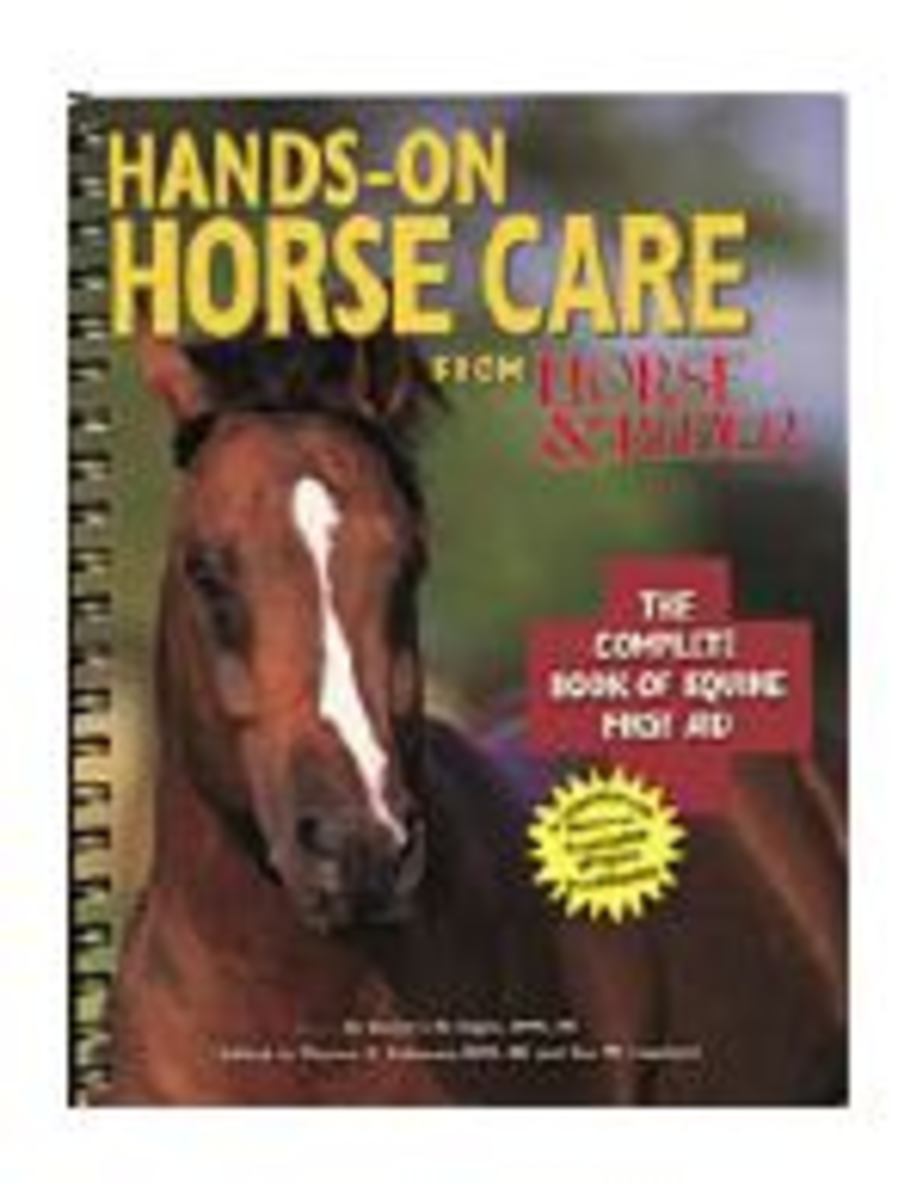
After having reviewed Hands-On Senior Horse Care, which is also written by Karen Hayes, I was eager to review this book, to see if it offered the same kind of easy-to-digest advice. I was not disappointed.
One compaint I have with some veterinary books is that they assume you know what is wrong with your horse. They are organized in a way that you have to know the name of the complaint or illness in order to find it and read about it.
Hands-On Horse Care is different in that Section One contains a series of First Aid Action Plans which use a flow-chart format to help the horse owner determine what is wrong with their horse and then recommends what action should be taken.
For example, if your horse is losing his hair you would go to the “Problems of the Skin and Haircoat” section of the First Aid Action Plan. Right there you’ll find the problem — “Loss of Hair.” Then you’ll find that the flow chart asks you a question: “Is your horse rubbing or scratching at his skin?” If your answer is positive, the action plan gives you a page in the book on itchy skin and you can follow the questions and answers on that page. If your answer is negative, the chart moves to the next question, and so on.
At any stage, if you respond Yes, the action required may be to call your veterinarian and this book is obviously not supposed to replace proper veterinary care of your horse. Rather, it’s objective is to build your knowledge to help you assess your horse’s condition and know which action is appropriate.
There are sections covering all aspects of a horse’s health, including wounds, skin problems, eye problems, lameness and even miscellaneous problems such as being off his feed. They are all meticulously covered in the same question and answer format, leading the horse owner to an informed conclusion of what the problem is and what to do about it.
Section Two covers hands-on horsekeeping skills which begins by helping you assess your horse’s baseline behavior and vital signs. Knowing what is normal for your horse will help you to determine quickly when something is abnormal.
This section will show you how to do just about everything related to your horse’s health, including deworming, giving oral medications, cleaning and dressing wounds etc. You’ll find easy to read text and clear photographs in these step-by-step guides, which you’ll be referred to as you go through the question and answer charts in Section One.
The last section of the book is a Glossary which includes very detailed descriptions of a huge selection equine diseases and disorders. So if you find yourself needing to know what cicatricial alopecia or pemphigus foliaceus is, you can find it in the Glossary.
In my opinion, this book is a must-read for every horse owner, for it’s easy-to-navigate format and clear, step-by-step instructions.
Hands-On Horse Care was first published in 1997 and reprinted in 2000 by Cowles Enthusiast Media (now Primedia Enthusiast Publications).
Karen Hayes, DVM, MS, is a 1979 graduate of the University of Illinois’ veterinary school. She is also the author of Hands-On Senior Horse Care, as well as two other equine-care books and many articles which have been published in horse-related magazines.








